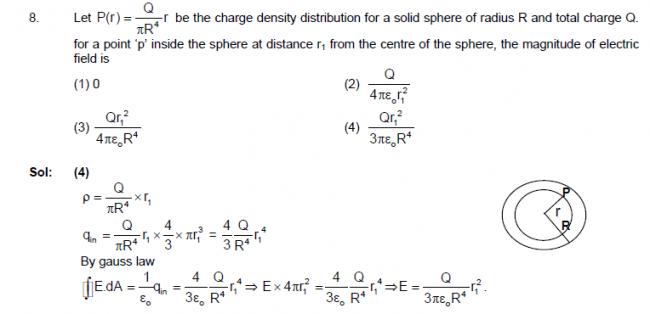post #2 is ambiguous,u can look at it in 2 different ways,so there are 2 possible answers
FIITJEE gave out this answer for a 8 mark question...........plzz tell me if it is correct or not......
every other institute gave a diff answer which i got.......plzz telll.........i may get 10 marks extra.........
-
UP 0 DOWN 0 0 23

23 Answers
Yah!!
for a function to be judged onto or into we shud b given proper CO-DOMAIN!!!
if it is not i guess v usually take it as all Real numbers!!
86) sir, should n't we take the co-domain to be (-∞,+∞)as nothing is mentioned...but the range however starts from -1...so how can it be bijective?
can anyone give me a clarity on the "work done on the gas" question?
i mean when at constant pressure T is increased, the volume as well increases...this means that work done by u, an external agent, on the system is negetive itnt it? so why were the options in all the 3 questions related to the passage positive?
@ vivek
intensity is related to mod ( amplitude) 2
so
| 1 + 2cos2pit | from 0 to t =1 has maxima at 0 ,minima at 1/3 ,maxima at -1,minima at 2/3
now wat are beats ?
( no of maxima or no of minima in a interval )
so 2 is the ans
yes kaymant sir agreed with u but also both statements can be false (not in options)
so Q is ambiguous ???
anyway i wud have 10 marks inc for that Q[1]
yippeeeeeee..................we love u kaymant sir..........
20 marks incresed..............
i hope dose AIEEE guys see this........
86) We know that the graph of a function and its inverse can intersect (if they do so) only on the line y=x.
Thus f(x)=f-1(x) implies
(x+1)2-1=x give us x=0, -1.
Further it is easy to see that f(x) is strictly increasing for x ≥ -1. Hence it is a bijection. So both the statements are true. But second one does not explain the first one.
wat abt post #2???
i ll get a 10 marks jump if they r rite!!
and this one too
*76. Three distinct points A, B and C are given in the 2 – dimensional coordinate plane such that the ratio
of the distance of any one of them from the point (1, 0) to the distance from the point ( - 1, 0) is equal
to 1
3
. Then the circumcentre of the triangle ABC is at the point
(1) (0, 0) (2) 5 , 0
4
 
 
ï£ ï£¸
(3) 5, 0
2
 
 
ï£ ï£¸
(4) 5, 0
3
 
 
ï£ ï£¸
Sol: (3)
P = (1, 0) ; Q(−1, 0)
Let A = (x, y)
AP BP CP 1
AQ BQ CQ 3
= = = ..(1)
⇒ 3AP = AQ⇒ 9AP2 = AQ2 ⇒ 9(x −1)2 + 9y2 = (x + 1)2 + y2
⇒ 9x2 −18x + 9 + 9y2 = x2 + 2x + 1+ y2 ⇒ 8x2 − 20x + 8y2 + 8 = 0
⇒ x2 + y2 − 5x + 1= 0 …(2)
∴ A lies on the circle
Similarly B, C are also lies on the same circle
∴ Circumcentre of ABC = Centre of Cricle (1) = 5, 0
2
 
5/2,0 or 5/4,0
which is correct
brilliant gives 2nd but fiitjee gives 1st one..
@ celestine,how do u get the no of beats frm here
sin2\pi (\nu-1) t + sin2\pi (\nu+1) t + sin2\pi \nu t = 2sin2\pi \nu t cos2\pi t + sin2\pi \nu t = sin2\pi\nu t (2cos2\pi t +1)
86 its debatable either both stats are right or both stats are wrong
yippeeeeeeeeeeeeeeeeee............
10 marks more..........
wat about d maths wala????
yes ans given by fiitjee is wrong ( grave errors in maths and phy by them ---- unpardonable for such a reputed institute)
akand see aakash's sols most accurate except for one q in phy (the beats one ans is 2)
The answer given by fiitjee is wrong. Since the charge density is variable, you cannot get the charge enclosed simply by multiplying the density with the volume. You need to integrate.
The charge enclosed will be
q_\textrm{enc}=\int_0^{r_1}\dfrac{Q}{\pi R^4}r\ 4\pi r^2\ \mathrm{d}r=Q\dfrac{r_1^4}{R^4}
Accordingly, one gets the field as
E(r_1)=\dfrac{Qr_1^2}{4\pi \epsilon_0 \ R^4}
Hence, option (3).
